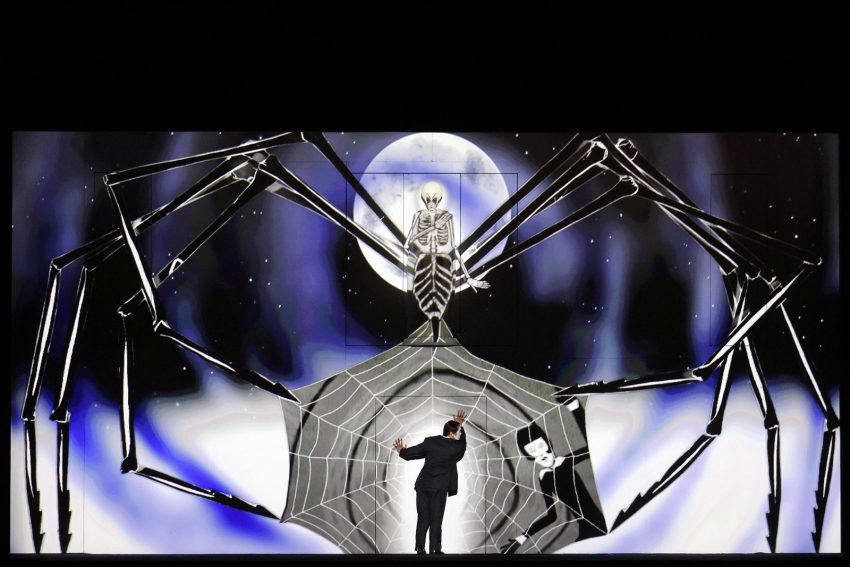
“The Magic Flute” Charms with Silent Movie Magic—at SF Opera
Mozart Meets Chaplin in Jazz Age Animation & Flapper Fashion
by Barry David Horwitz
What’s not to love about an evening with Mozart at SF Opera in silent movie style, intriguing animation, and a Wizard of Oz storyline?
There’s lots of art in re-making Mozart into a magical mystery tour—in 20s Jazz Age costumes, bringing the Masonic rituals down to pure comedy. Think flappers confronted by an impending Crash that exposes corruption and cruelty. Think “The Magic Flute” as farce.
It works, it draws us in—we soar with the fairy wings of a flighty Tinkerbell who embodies the Magic Flute itself. There’s no end of brilliantly re-imagined musicality in this world-slaying and recreating vision.
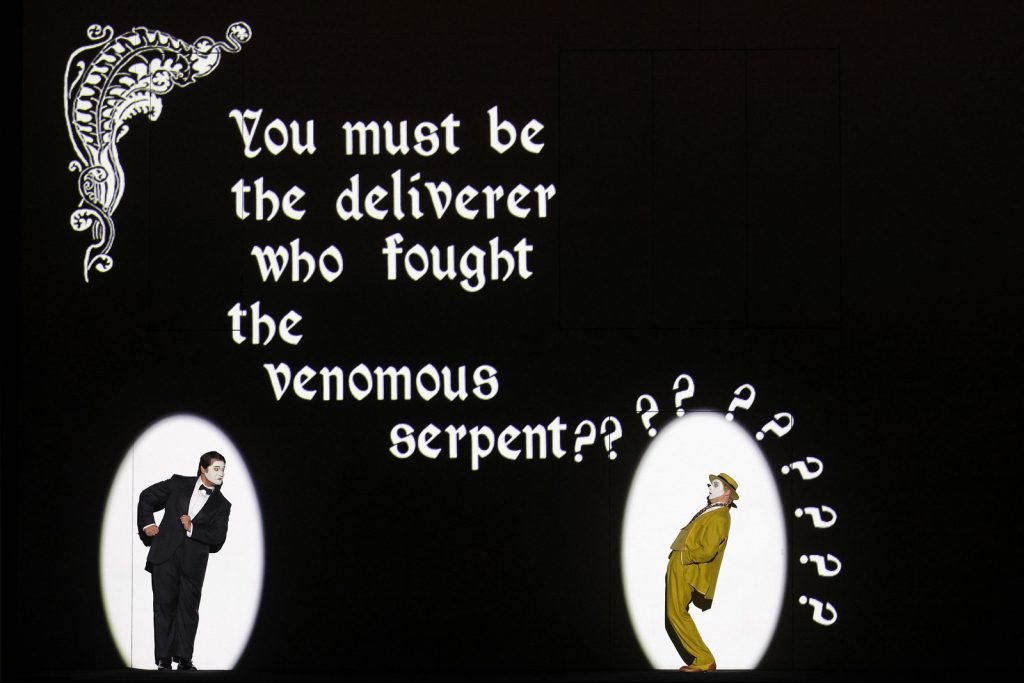
OK, it’s not your grandma’s “Magic Flute” and singers mostly sing straight out at the audience. They are often placed high up on a huge white movie screen, where they pop out of magic portals. Often, we see only their upper bodies while cartoon legs prance beneath them—very Charlie Chaplin or Harold Lloyd.
These charming figures launch continual cartoon attacks—fireballs, teeth, spiders. The flying objects attack our startled heroes, offering comic fun. This international production by Barrie Kosky and Suzanne Andrade first appeared at the Komische Oper Berlin in 2012, and has played worldwide. San Francisco Opera’s vast stage enthrones the Queen of the Night as a giant spider. Soprano Anna Siminska peers down from a spider body. It’s a chilling effect as her spider legs trap and taunt her enemies.
Chaplin would be proud, as her villainous chords follow trapped victims. She particularly hates her frightened daughter Pamina (soprano Christina Gansch) and her fragile suitor Tamino (tenor Amitai Pati). This Tamino earns our respect by being sensibly afraid in music hall style, while singing elegantly of his fears.
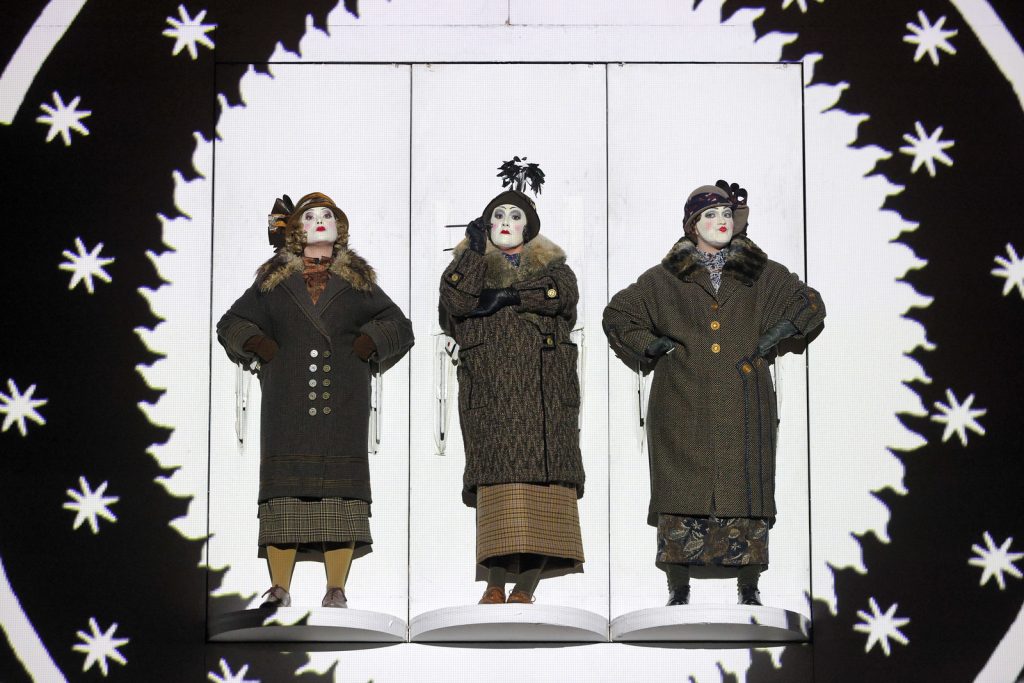
Tamino and Pamina remind us of Dorothy wending her way through villains and disasters to the Emerald City. They are unwitting heroes seeking redemption—following dangerous pathways to an idealized goal.
Sarastro (bass Kwangchul Youn) embodies the changeable Man Behind the Curtain in Oz, as he urges the lovers toward redemption. He and his guards wear long beards, stove-pipe hats, and long black coats—bringing both promise and threat.
But Sarastro’s sidekick, Monostatos (tenor Zhengyi Bai) adds a 20s comic touch. The scheming, vampiric villain pursues Tamina madly, adding to the charm—without much real threat. Mozart’s marvelous music becomes background for a Holy Quest—turning threats into comedy and cartoon. The recitatives are rendered in silent movie subtitles to good effect.
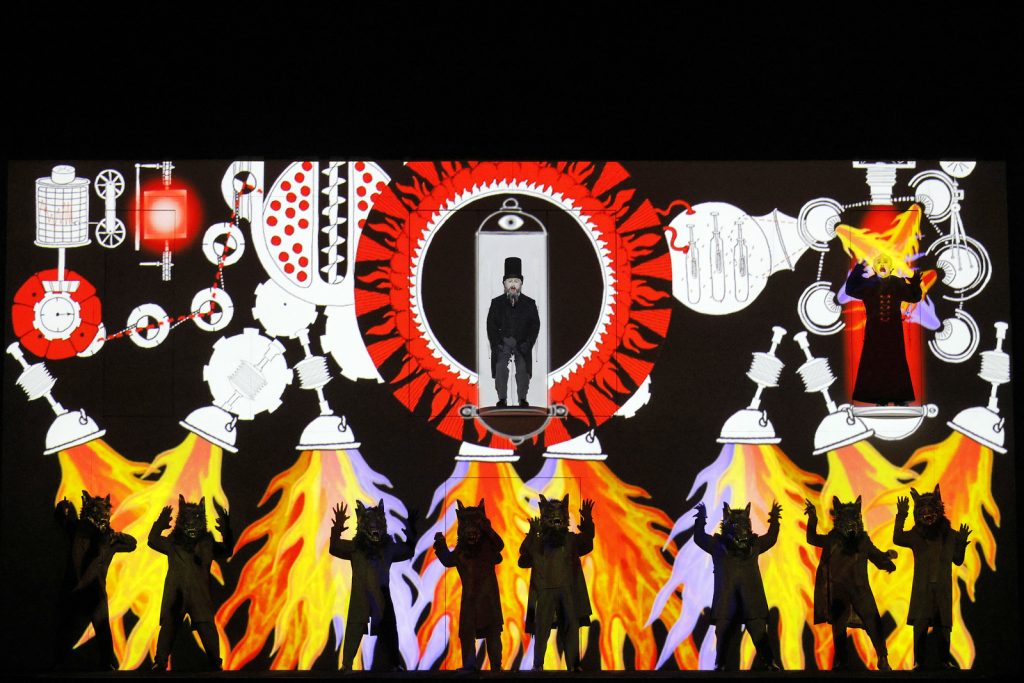
The 20s music hall setting lightens the experience, allowing us to concentrate on musical pleasures—frozen in time and space. The singing of a silent movie Papageno—the tuneful bird seller—by baritone Lauri Vasar is moving and magnificent.
The three ladies-in-waiting to the Queen of the Night sparkle with flapper wit and mischief. Soprano Olivia Smith, and mezzo sopranos Ashley Dixon and Maire Therese Carmak, dressed funny fur coats, make joyous music.
Vasar makes Papageno a more complex figure, human and empathetic rather than comic and pitiful. His love for Pagagena (sprightly Arianna Rodriguez) puts the cherry on the sundae of a unique and charming “Magic Flute,” unlike any other.
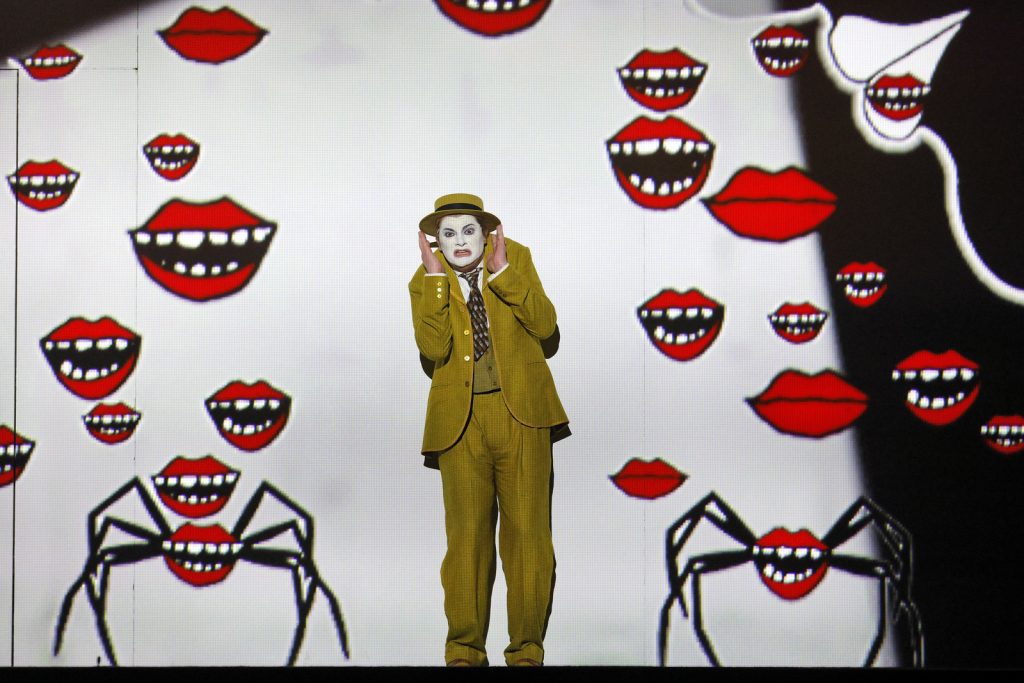
“The Magic Flute” by Wolfgang Amadeus Mozart, libretto by Emanuel Schikaneder, music directed by Eun Sun Kim, production by Barrie Kosky & Suzanne Andrade, chorus directed by John Keene, animation by Paul Barritt, production design by Esther Bialas.
—produced by Komische Oper Berlin, concept by “1927,” co-produced by Los Angeles Opera & Minnesota Opera
—at San Francisco Opera. Info: sfopera.com – to June 30, 2024.
Cast: Amitai Pati, Christina Gansch, Lauri Vasar, Kwangchul Youn, Anna Simińska, Olivia Smith, Ashley Dixon, Maire Therese Carmack, Zhengyi Bai, Arianna Rodriguez, and Jongwon Han.
Banner photo: Anna Siminska & Amitai Pati. Photos: Cory Weaver/San Francisco Opera